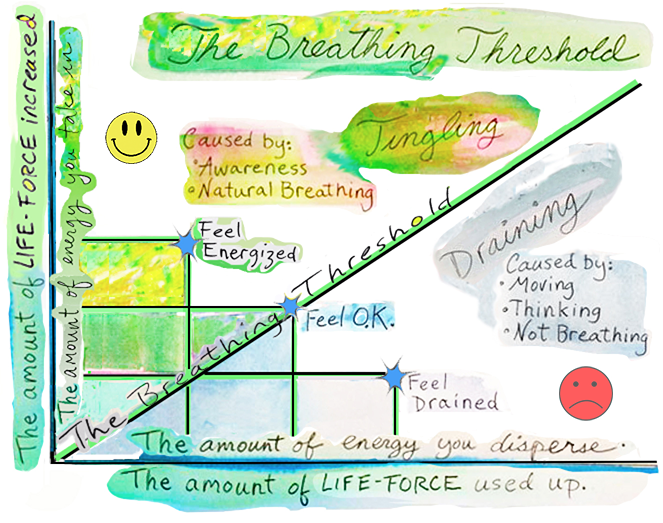Mouth vs. Nose Breathing
Breathing can be done through your mouth or your nose
Mouth vs. nose breathing shows you whether you tend to engage and relate more with your external world or your internal world.
Mouth breathing
Breathing through your mouth shows that you are physically and emotionally engaged with your life.
Whenever you laugh or cry or run or exercise or sigh or yawn, you breathe through your mouth, so Natural Breathing is naturally done through the mouth.
Mouth breathing is also preferred in Natural Breathing because it is easier and gives you faster access to a full breath and more air than through the nose.
Nose breathing
Breathing through your nose connects you with your internal world.
Nose breathing pacifies you. This may be good to do if you want to meditate or calm down.
Sometimes nose breathing can take place at the end of a session, but is not ideal, since it dis-engages physical and emotional awareness.
Alternating Mouth and Nose breathing
Breathing in through the nose and exhaling through the mouth or any combination thereof can only be done by mentally controlling your Life-force. It takes effort and a certain level of muscle engagement to constantly change the flow of the air, and thus uses up Life-force, keeping you below the Breathing Threshold.
Unobstructed Natural Breathing is always done through the mouth.
Excerpt from the Natural Breathing Own Your Self Manual.
Breathing can be done through your mouth or your nose
Mouth vs. nose breathing shows you whether you tend to engage and relate more with your external world or your internal world.
Mouth breathing
Breathing through your mouth shows that you are physically and emotionally engaged with your life.
Whenever you laugh or cry or run or exercise or sigh or yawn, you breathe through your mouth, so Natural Breathing is naturally done through the mouth.
Mouth breathing is also preferred in Natural Breathing because it is easier and gives you faster access to a full breath and more air than through the nose.
Nose breathing
Breathing through your nose connects you with your internal world.
Nose breathing pacifies you. This may be good to do if you want to meditate or calm down.
Sometimes nose breathing can take place at the end of a session, but is not ideal, since it dis-engages physical and emotional awareness.
Alternating Mouth and Nose breathing
Breathing in through the nose and exhaling through the mouth or any combination thereof can only be done by mentally controlling your Life-force. It takes effort and a certain level of muscle engagement to constantly change the flow of the air, and thus uses up Life-force, keeping you below the Breathing Threshold.
Unobstructed Natural Breathing is always done through the mouth.
Excerpt from the Natural Breathing Own Your Self Manual.

